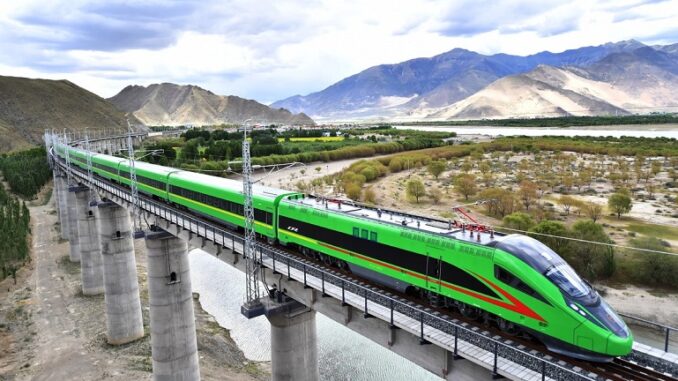
Published 2022/02/07
China outlined a modern comprehensive transportation system over the 14th Five-Year Plan (2021-2025) period in a circular rissued on Jan 18, 2022.
According to the circular, by 2025, China will have generally realized integrated transportation development, achieved breakthroughs in pursuing intelligent and green transportation, and made prominent improvements in overall capability, service quality and efficiency of the transportation sector. By that time, China will have made a further step on its road to build a world-class transportation system.
Jn addition, more than 95 percent of cities with a population of over 500,000 will be connected to the country’s high-speed railway network, and a modern airport system will be basically completed. This will continue contributing to the improvement in the size, capability, quality and efficiency of the country’s comprehensive multidimensional transport network.
The circular says, between 2021 and 2025, China’s railway operation mileage will increase by 19,000 kilometers, highway operation mileage by 302,000 kilometers, and high-level inland river waterways by 2,400 kilometers. China is also aiming to have over 270 civil airports and a total mileage of urban transit of around 10,000 kilometers by 2025.
According to the circular, China will strive to make secondary-level highways and above occupy 70 percent of its national highway system in the western region, and connect over 85 percent of unincorporated villages and groups with a large population to hardened roads. The country will also build around 100 rural logistics service brands by 2025.
The circular says China will improve the collection and distribution system of transportation hubs. By 2025, over 70 percent of major coastal ports will be connected with railways, and more than 80 percent of aviation hubs connected with rail transit.
The circular urges the country to continue optimizing transportation structure and improve the efficiency of the comprehensive transport network. The country will normalize price management in new businesses and models of the transport sector, and implement measures of tax and fee reduction for logistics enterprises.
The circular estimates that by 2025, the annual revenue of China’s courier industry will exceed 1.8 trillion yuan ($283.67 billion), and around 150 billion parcels will be handled on a yearly basis. The industry will have an annual growth rate between 10 percent and 11 percent, which is twice of that of the country’s GDP.
According to the circular, China will enhance its ability to offer equalized universal postal services during the 14th Five-Year Plan period to make courier services more convenient, more accessible and more reliable, said Zeng Junshan, director of the policy and regulation department, State Postal Bureau of China.
Besides, the country will make smart parcel lockers and other devices in urban areas better meet the diversified demands of the people, and extend direct collecting and shipping services to basically all incorporated villages, Zeng said, adding that all border villages will be covered by postal services.
By 2035, the National 1-2-3 Travel Circle and the Global 1-2-3 Logistics Circle will take initial shape, basically making China a country with a strong transportation network.
The National 1-2-3 Travel Circle refers to one-hour commute time in cities, two hours’ travel time within city clusters and three hours to travel between major domestic cities.
The Global 1-2-3 Logistics Circle means one-day delivery to destinations within China, two-day delivery to neighboring countries, and three-day delivery to major global cities, according to the document.
Source: Qiushi Journal, 2022-01-29. http://en.qstheory.cn/2022-01/29/c_704020.htm
Photo: A Fuxing bullet train runs on the Lhasa-Nyingchi railway during a trial operation in Shannan, Southwest China’s Tibet autonomous region, June 16, 2021. [Photo/Xinhua]